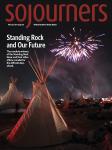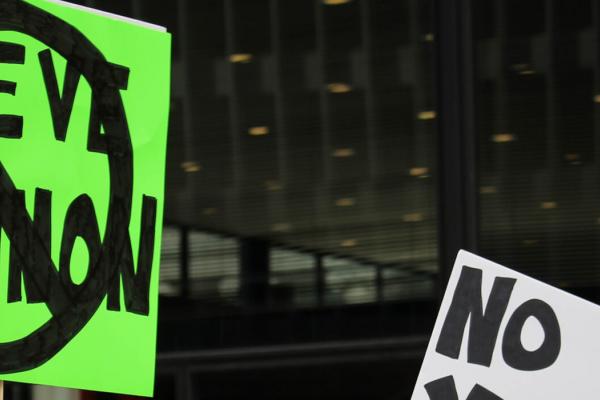AS HAS BEEN widely noted, when Donald Trump named Steve Bannon to head his presidential campaign, he brought into the U.S. political mainstream a set of ideas that have, for at least 75 years, been relegated to a disreputable fringe. Bannon has bounced through a number of incarnations in the past three decades—naval officer, investment banker, and film producer—before joining the ultraconservative “news” website Breitbart.com, first as a board member, then, after founder Andrew Breitbart’s sudden death in 2012, as executive chair. In that role, he took an outlet that was already at the far right edge of American politics down the rabbit hole and into the underground world of race-based nationalist theories and the politics of white resentment.
Breitbart founded his site in 2007, and it came to prominence in 2009 when the site promoted the deceptively edited hidden-camera videos that led to the demise of the ACORN community organizing network. A little later, Breitbart was the first outlet to post the again deceptively edited videos that led to the firing of African-American U.S. Department of Agriculture official Shirley Sherrod. In 2011, Breitbart broke the story of liberal Democratic representative Anthony Weiner’s penchant for obscene self-portraits.
Then Bannon took over in 2012, and the website began to exhibit a new interest in the far right nationalist movements rising in Europe. This, coupled with a pre-existing obsession with the imagined dangers of illegal immigration, helped make the site, as Bannon later boasted, “the platform for the alt-right.” The term “alt-right,” as we now all know, refers to a loose, mostly online network of white activists gathered around the general notion that the “white race” and its European-derived culture is slated for obliteration by the forces of globalism and multiculturalism.
The alt-right presence on Breitbart is often more implied than overt. The site’s obsession with incidents of violence by African Americans and the perfidies of Middle Eastern and African refugees in Europe is red meat for this crowd. But the white nationalists really come front and center if you scroll down to the “discussion” section below any of these stories. There, attacks on “sniveling ... social justice jew-puppets” don’t seem all that out of place.
However, the best place to look for an insider’s take on the alt-right and a demonstration of its relationship to Bannon’s Breitbart site is in the article “An Establishment Conservative’s Guide to the Alt-Right,” by Breitbart staffers Allum Bokhari and Milo Yiannopoulos. There you will find the movement’s members described as “young, creative, and eager to commit secular heresies.” Their theoreticians, you will learn, are both “dangerously bright” and “fearsomely intelligent.” According to the Breitbart authors, the various streams of the alt-right are united in their horror at “the contrast between the truly marginalized”—that is, white men—“and those merely claiming victim status”—blacks, Latinos, women, and sexual minorities.
The people frequenting the bottom of the page on Breitbart represent a real danger to U.S. democracy, not by their numbers (not yet anyway), but by their ability to apparently explain to uneducated, low-income whites the reasons why they feel ignored and exploited in a land they thought was supposed to be theirs. The alt-right sings the siren song of “white identity” and tells the disinherited of European extraction that their enemy is multiculturalism.
This, of course, steers people away from the cold hard facts of corporate globalization and forced deindustrialization that have dictated the terms of U.S. life for more than 40 years. In the end, the vast majority of Americans, of all colors, who are victimized by this economy can’t be united by mere sentiment. That will require a common project that unites people around mutual self-interest and around the conviction that this land was indeed made for all of us, and not just for the 1 percent.

Got something to say about what you're reading? We value your feedback!

